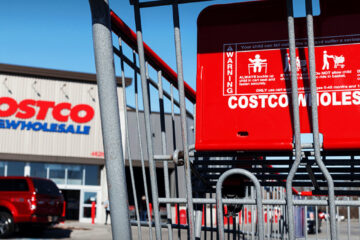Car ownership is seen as less of a privilege and more of a necessity in America.
Thanks to decades of building cities to accommodate private vehicles, the only efficient way to travel in most places in this country is to drive.
💵💰Don’t miss the move: Subscribe to TheStreet’s free daily newsletter 💰💵
New York City, Washington D.C., and Boston are some of only a handful of American cities that are actually walkable. Other major cities like Los Angeles, Houston, and Atlanta make walking or cycling nearly impossible.
In those cities and most rural towns, having a vehicle is non-negotiable. But while vehicles are needed, they are becoming increasingly unaffordable for most Americans.
Statistics show that Americans will prioritize owning a vehicle over paying other expenses.
Related: Ford announces desperate move to battle tariffs
Nearly half of American drivers cite car expenses as the reason they can’t save any money, and the average American spends about 20% of their monthly income on auto loans, fuel, insurance, and maintenance.
Most financial experts cap the monthly income you should spend on a vehicle at 15%.
According to a MarketWatch Guides survey, about 10% of drivers say they spend 30% of their monthly income on driving, while another 12% said they “found themselves living paycheck to paycheck due to the financial strain of their cars.”
With car prices expected to climb in the coming months thanks to tariffs, and unemployment also expected to rise for the same reason, car buyers are being cautious about their next purchases. Unfortunately, the latest data will not reverse this trend.
Car buyers were very active earlier this year before auto tariffs took effect.
Image source: Getty Images
Car buyers head to the sidelines to wait for the Fed
President Donald Trump has made his love of tariffs known for months, so some industries have been planning for the current environment.
Changes to monetary policy led consumers on a buying spree earlier this year.
“Consumers jumped initially to buy ahead of tariffs, driving prices higher. Now vehicle supply is tighter, prices are rising, and incentives are falling,” Cox Automotive said in a recent report.
However, now that the tariffs have officially landed, car buyers are waiting to see what the Federal Reserve does with interest rates before they make their next purchase.
Related: Tesla rival makes huge announcement about what’s coming in 2026
Dealer incentives are down, vehicle prices are up, and auto loan rates are just 36 basis points below the 25-year high reached last year.
On Wednesday, the Fed left interest rates at their current levels. The central bank expects tariffs to drive inflation by at least a full percentage point, and while employment has held strong, that could also change as the economy feels the effects of the trade war.
“We are expecting volatility this summer in rates, prices, and sales. When rates and prices move higher, sales are likely to fall,” the report said.
“Chair Powell said today that the Committee doesn’t have to be in a hurry. It’s likely that car buyers will be taking a similar approach as well.”
Can you afford that car purchase?
Car buyers must consider several factors before making a purchase.
Of course, the vehicle itself is only part of the expense, as it will need insurance, maintenance, and gas to run.
More Automotive news:
Ford announces desperate move to battle tariffsAmerican car company takes drastic action in response to tariffsCar buyers rejoice – you just got great news about tariffs
In addition to capping your car payments at about 15% of your monthly take-home, financial experts also recommend shoppers aim for a 20% down payment, a 36 to 48-month loan term, and expenses (including insurance) at between 8% and 10% of your gross monthly income.
Experts also recommend that you know your credit score and loan approval amount in advance and that you shop around with different lenders for the best rate.
Related: Veteran fund manager unveils eye-popping S&P 500 forecast


